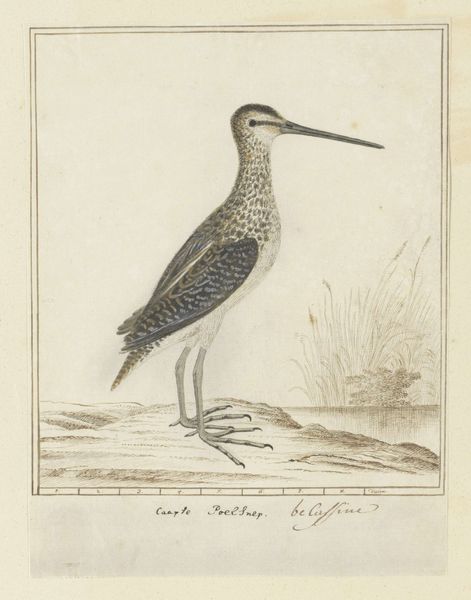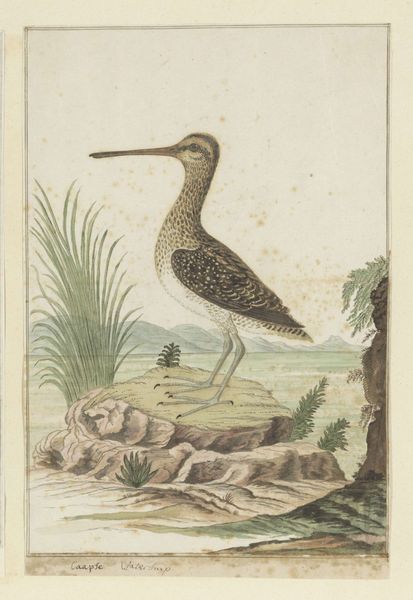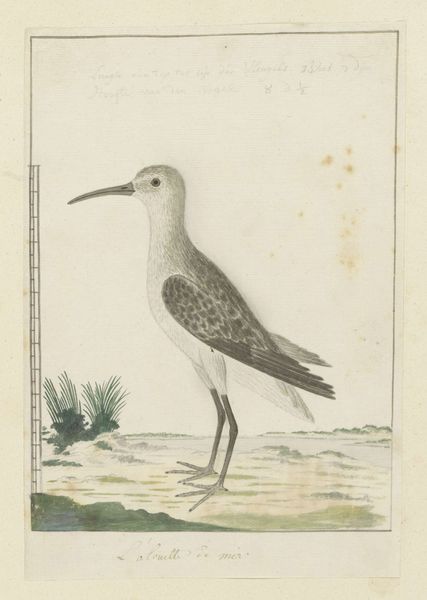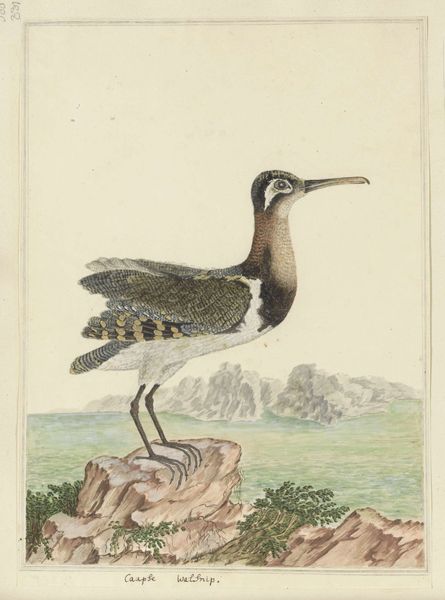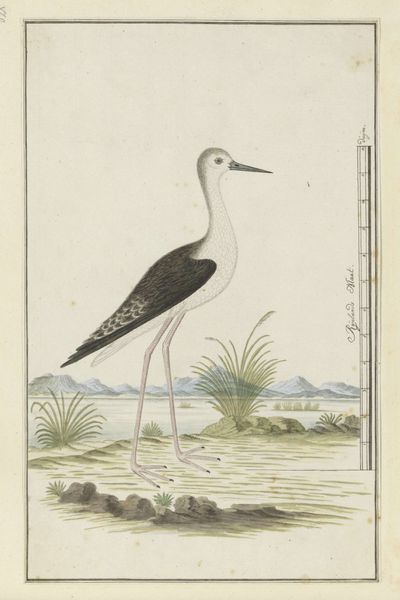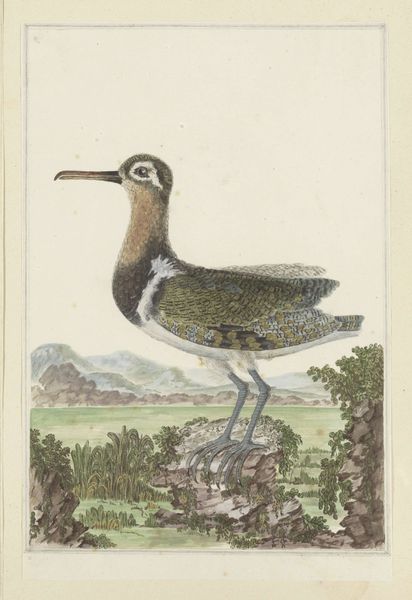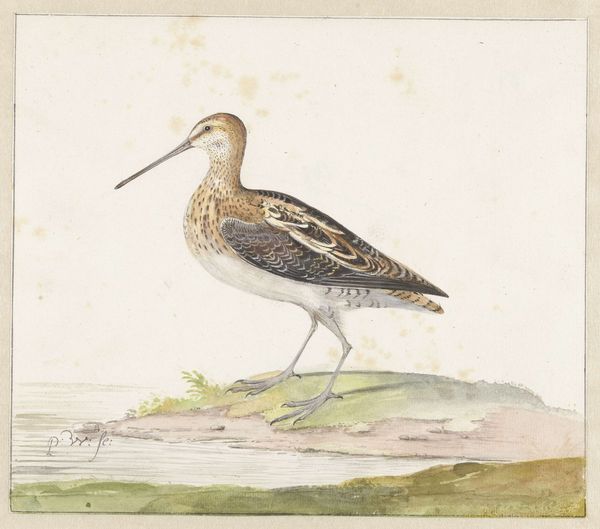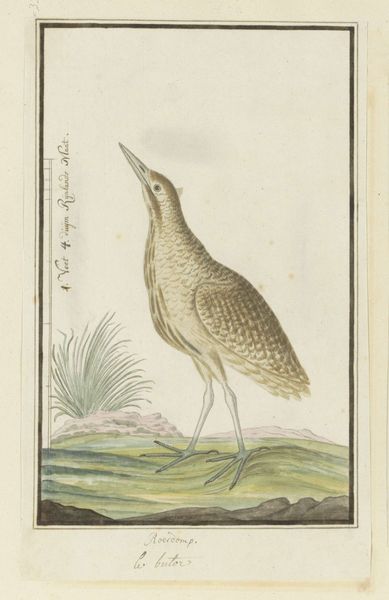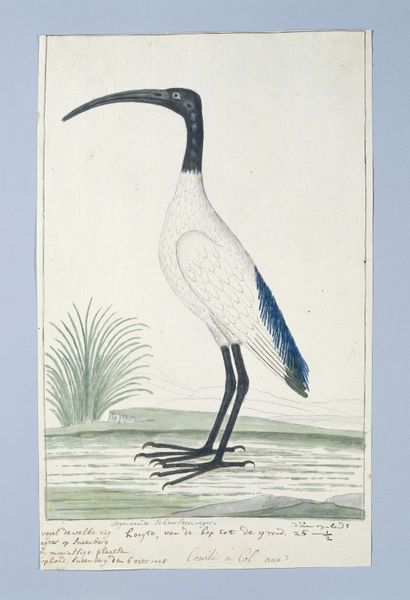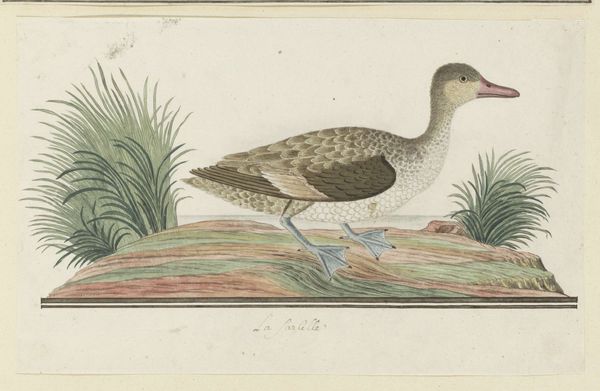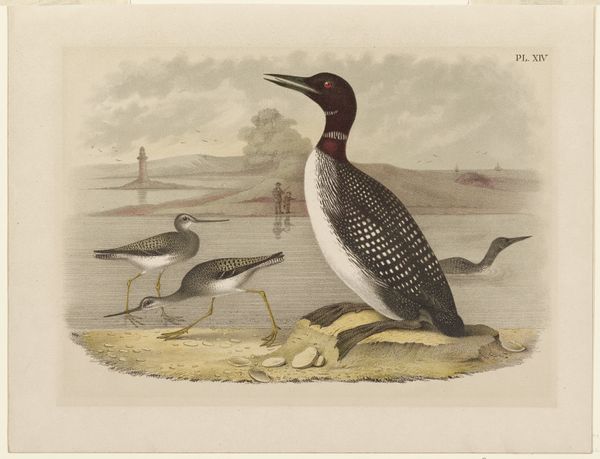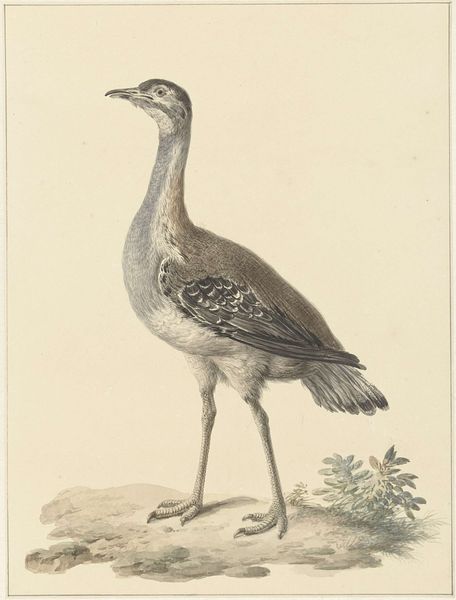
#
aged paper
#
toned paper
#
light pencil work
#
pencil sketch
#
old engraving style
#
personal sketchbook
#
sketchbook drawing
#
watercolour illustration
#
sketchbook art
#
watercolor
Dimensions: height 660 mm, width 480 mm, height 415 mm, width 255 mm, height mm, width mm
Copyright: Rijks Museum: Open Domain
Curator: Looking at this detailed image of a Common Greenshank, rendered in watercolour and pencil, evokes a feeling of quiet observation. Its muted palette contributes to a somewhat solemn mood. What stands out to you? Editor: The symbolism is fascinating! Birds often represent freedom, and their depiction is a tradition spanning back millennia, from ancient Egyptian hieroglyphs to modern scientific illustration. What strikes me here is the contrast between the bird's stillness and that inherent symbolic association with boundless space. Curator: Indeed. This artwork, "Tringa nebularia," likely dates back to between 1777 and 1786. It’s part of a broader movement where detailed illustrations of flora and fauna served both scientific and aesthetic purposes, circulating within a culture increasingly captivated by the natural world and, crucially, the ability to classify it. It's worth noting the artist, Robert Jacob Gordon, was a Dutch military officer and explorer, known for his travels in Southern Africa. Editor: The inclusion of a measurement scale on the right side immediately informs us this drawing carries the symbolism of science and reason! By visually framing it in terms of its quantifiable characteristics, the artist anchors our emotional experience and channels it to objective analysis. But for whom? And where might this particular icon have functioned most prominently? Curator: Good question! Gordon produced this sketch not for a broad audience, but likely within the context of his personal sketchbooks, functioning perhaps as both a tool for scientific cataloging and personal reflection on his encounters in nature. These images served the important function of informing European audiences about exotic animals and their unique ecosystems. Editor: You're right. Despite the precision, I still get a strong sense of the individual artist behind the work. The shading gives real weight and shape to the bird; the detailed speckled rendering suggests care and respect for its form. It creates a sense of engagement. Curator: Agreed. Considering it within the historical context highlights how art can simultaneously function as a scientific document, personal expression, and a tool of colonial exploration and knowledge production. It prompts us to examine our role as viewers within a network of historical power dynamics. Editor: For me, this image shows the subtle power of iconic images and how their significance changes as cultural interpretations and functions evolve, depending on setting and historical moment. In fact, images of this waterbird have occurred across several cultures and moments, each with its own cultural baggage to consider. Curator: Yes. So much to consider about the cultural relevance of the common bird. Thanks for pointing out so many rich cultural associations, the iconology in particular.
Comments
No comments
Be the first to comment and join the conversation on the ultimate creative platform.
